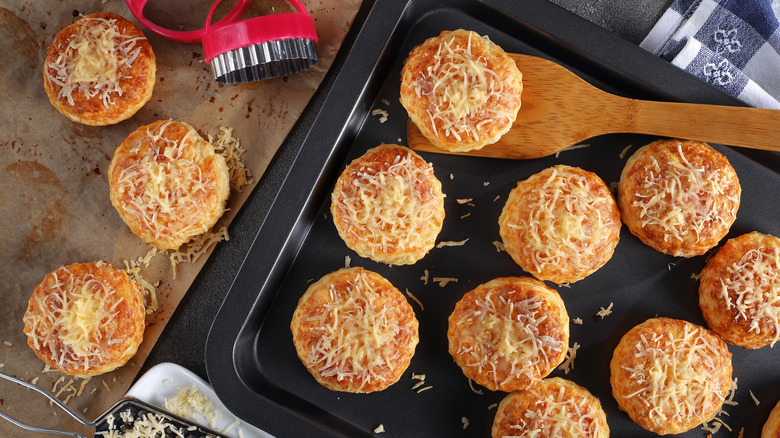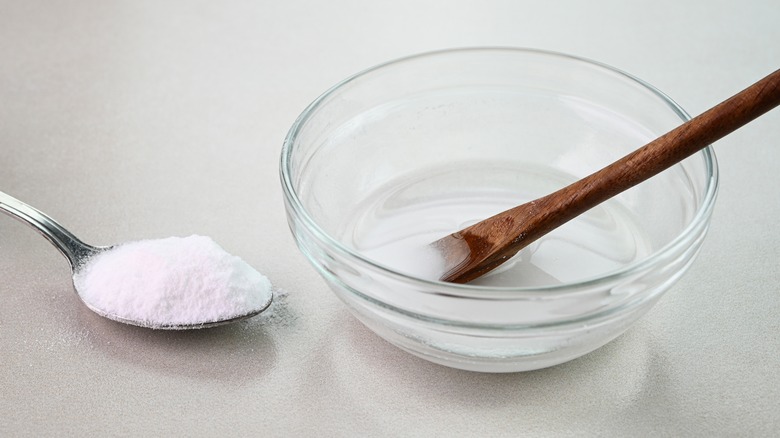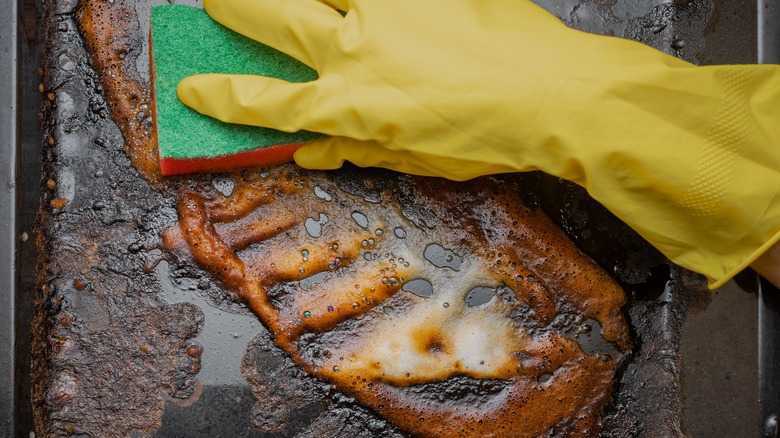The 2-Ingredient Paste You Need To Clean Dirty Cookie Sheets
To the dismay of any home baker, cookie sheets and stubborn stains always seem to be a package deal. Whether you are facing off with grease or char, you are probably well aware that a simple sponge and dish soap scrubbing job will not be enough to restore your sheet to its original spotlessness. As irksome as these stains are, you cannot deny their tenacity.
However, cookie sheet stains are much less tenacious when up against a mixture of two common household products: baking soda and hydrogen peroxide. The two ingredients form a paste-like substance when combined. All you need to do is spread the paste across your dirty pan, let it sit for 2 to 3 hours, and then wipe it off with water and a paper towel. Once you see how clean your cookie sheet has become, you'll be blown away by the power of the paste.
The simple science of tackling stains
Baking soda and hydrogen peroxide are forces to be reckoned with when they work together. They each have properties that are assets to the cleaning process. Baking soda holds a ton of cleaning power on its own. You can clean a pizza stone with just baking soda, and you can clean aluminum pans easily, too. Combining it with hydrogen peroxide unleashes even stronger cleaning potential, though.
In chemistry terms, baking soda is a base compound, and hydrogen peroxide is a weak acid. Mixing them into a paste leads to a reaction that produces carbon dioxide, which helps pull the otherwise stubborn stains off the surface of cookie sheets. After the paste does all the heavy lifting with the grime and grease, all you have to do is gently wipe it away. It's a process that may seem like witchcraft but is just basic chemistry at work.
What sets hydrogen peroxide apart from other bleaches
When trying this cleaning hack, be sure to stick with the tried-and-true hydrogen peroxide and baking soda recipe. Hydrogen peroxide is a form of bleach — oxygen bleach — but combining baking soda with another chlorine-based bleach will not create the same cleaning effect.
Chlorine bleach is a strong and highly effective disinfectant, commonly used to tackle clothing stains and it's perfectly safe to boost its cleaning power with bicard soda for this purpose. It is, however, much stronger than hydrogen peroxide, and not well suited to cleaning cookware. Chlorine bleach can even eat away at aluminum, causing irreversible damage. If you do not have hydrogen peroxide on hand, vinegar and baking soda also make a strong team. Like hydrogen peroxide, vinegar is acidic, making it the perfect counterpart to baking soda. Sit back, relax, and revel in the cleaning magic of a simple acid and base duo.


